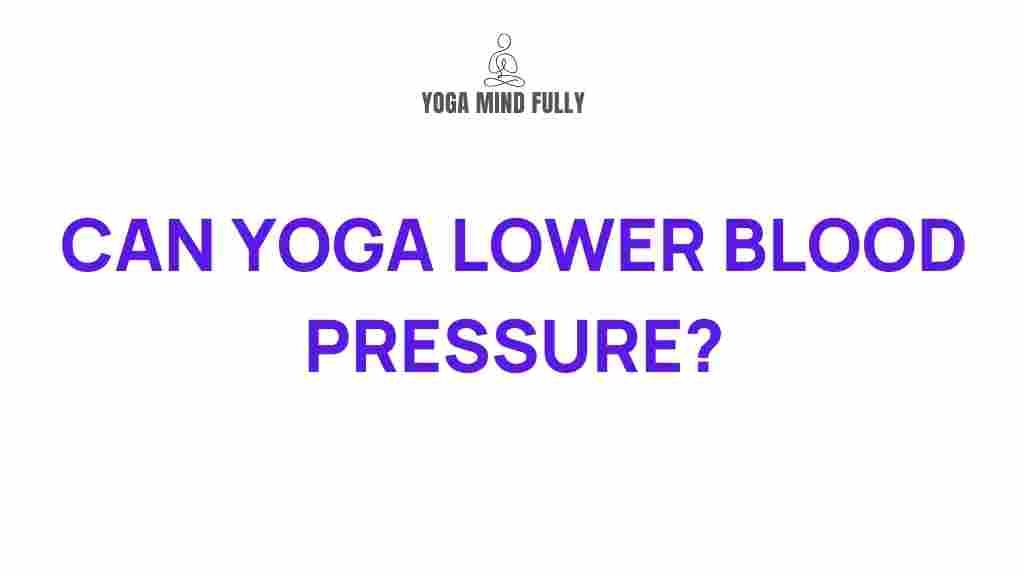How Yoga Can Transform Your Blood Pressure Health
High blood pressure, or hypertension, is a silent condition that affects millions of people worldwide. While medication is a common solution, natural methods like yoga offer a holistic approach to managing and even lowering blood pressure. In this article, we’ll explore the secret benefits of yoga for your cardiovascular health and provide actionable tips to incorporate it into your daily routine.
What Is High Blood Pressure and Why Does It Matter?
Blood pressure measures the force of blood pushing against your artery walls. When this pressure remains elevated, it can lead to severe health risks like heart disease, stroke, and kidney damage. Lifestyle factors such as stress, diet, and inactivity often exacerbate the problem.
This is where yoga comes in. Its calming practices not only improve physical flexibility but also significantly reduce stress and improve heart health.
Why Yoga Works for Lowering Blood Pressure
Unlike other forms of exercise, yoga focuses on mind-body connection, combining physical poses, controlled breathing, and meditation. Here’s why yoga is effective:
- Stress Reduction: Yoga reduces cortisol levels, calming the nervous system.
- Improved Circulation: Certain poses enhance blood flow, reducing arterial stiffness.
- Breathing Techniques: Practices like Pranayama lower heart rate and blood pressure.
- Weight Management: Regular yoga supports weight loss, a critical factor in managing hypertension.
The Best Yoga Practices for Lowering Blood Pressure
For beginners and experienced practitioners alike, certain yoga poses and breathing techniques are particularly beneficial for managing blood pressure.
Step 1: Start with Gentle Poses
Begin with these calming poses to ease into your practice:
- Child’s Pose (Balasana): Promotes relaxation and lowers stress levels.
- Cat-Cow Pose (Marjaryasana-Bitilasana): Improves spinal flexibility and blood flow.
- Legs-Up-the-Wall Pose (Viparita Karani): Enhances circulation and calms the nervous system.
Step 2: Incorporate Breathing Techniques
Breathwork, or Pranayama, plays a vital role in yoga’s ability to lower blood pressure. Try these methods:
- Alternate Nostril Breathing (Nadi Shodhana): Balances energy and reduces stress.
- Deep Diaphragmatic Breathing: Encourages oxygen-rich blood flow and lowers heart rate.
Step 3: Add Mindfulness and Meditation
Regular meditation enhances yoga’s benefits by reducing stress hormones and promoting relaxation. Aim for at least 10 minutes of mindfulness meditation daily, focusing on your breath or a calming mantra.
Step 4: Commit to a Consistent Routine
Consistency is key when using yoga to lower blood pressure. Try to practice for at least 20–30 minutes, 4–5 times per week. This consistency helps to create lasting improvements in both mental and physical health.
Common Mistakes and How to Avoid Them
To get the most out of your yoga practice, avoid these common pitfalls:
- Pushing Too Hard: Yoga is not about perfection. Avoid straining your body, especially if you’re new to the practice.
- Ignoring Breathing: Breathing is as important as the poses. Ensure you maintain steady, deep breaths throughout.
- Inconsistency: Irregular practice diminishes yoga’s cumulative benefits. Set a schedule and stick to it.
If you’re unsure about certain poses, consider consulting a certified yoga instructor to avoid injuries.
Tracking Your Progress
To monitor the impact of yoga on your blood pressure:
- Keep a blood pressure journal, noting daily readings and yoga sessions.
- Pay attention to improvements in stress levels and sleep quality.
- Celebrate small milestones, such as reduced reliance on medication.
Additional Resources for Your Yoga Journey
To deepen your practice, explore our beginner’s guide to yoga for step-by-step instructions. For further insights into how yoga affects cardiovascular health, check out this comprehensive article on Healthline.
Conclusion
Yoga is more than just an exercise—it’s a lifestyle change that can significantly improve your blood pressure and overall well-being. By combining physical poses, breath control, and mindfulness, yoga offers a holistic approach to managing hypertension naturally. Commit to a regular practice, avoid common mistakes, and track your progress to unlock its full potential.
Start your yoga journey today and experience a healthier, more balanced life. Your heart will thank you for it!
This article is in the category Yoga Practices and created by YogaMindFully Team
